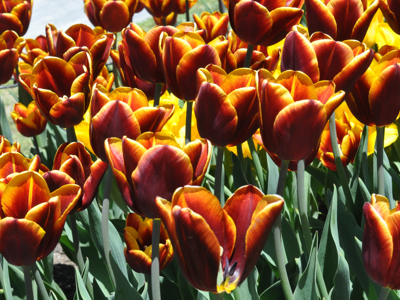
Fascinating "Did You Know" Facts About Tulips
1st Jan 2025
Tulips Once Caused an Economic Frenzy
In the 17th century, the Netherlands experienced "Tulip Mania," where tulip bulbs became so valuable they were traded as currency. At its peak, a single tulip bulb could cost as much as a house!
They’re Not Native to the Netherlands
Despite their strong association with Dutch culture, tulips actually originated in Central Asia, particularly in the region now known as Turkey.
Tulips Are Edible
During World War II, people in the Netherlands ate tulip bulbs out of necessity. The bulbs can be cooked and have a mild, onion-like flavor.
There Are Over 3,000 Varieties
Tulips come in an astonishing array of colors, patterns, and shapes, with more than 3,000 registered varieties worldwide.
Tulips Can Change Color
Some tulip varieties can "mutate" and change their colors over time due to environmental factors or natural aging.
They Continue Growing After Being Cut
Even after being cut, tulips can grow up to an inch or more in a vase. They also tend to bend and lean toward light.
The Name Comes from the Word for "Turban"
The word "tulip" is derived from the Turkish word tülbent, meaning turban, likely because of the flower’s shape.
They’re a Symbol of Perfect Love
In many cultures, tulips represent love and rebirth. Red tulips, in particular, are seen as a declaration of love.
Tulips Were Once Worth More Than Gold
During Tulip Mania, some bulbs were valued higher than their weight in gold, making them one of history’s most extravagant status symbols.
They Close at Night
Tulips are "nyctinastic," meaning they open and close in response to light and temperature. They often close at night and reopen in the morning.
Tulips are not just beautiful; their rich history and quirky characteristics make them one of the most intriguing flowers in the world!
Come see the tulips firsthand - book your tickets to the Tulip Patch today!

